




Joy for Generations: Nurturing intergenerational connections
As the old proverb goes, it takes a village to raise a child. Having strong relationships and connections with people nearby who are young and old, contributes to children, young people and parents’ sense of belonging and safety. And this feeling goes both ways – all generations benefit from feeling connected with their community.
For those of us with our heart in transformational initiatives, Joy for Generations (JFG) is a story of building connections in local communities to bridge the gap between generations young and old. It’s about learning from one another, proactively counteracting loneliness, and reconnecting community.
Intergenerational connection and learning have always been a fundamental part of flourishing, thriving communities and cultures. Yet too often we divide our communities and activities up by our age.
Our young people are in schools, while more mature and ageing generations often now live in retirement communities or aged-care facilities. As a result, there is often little interaction between generations.
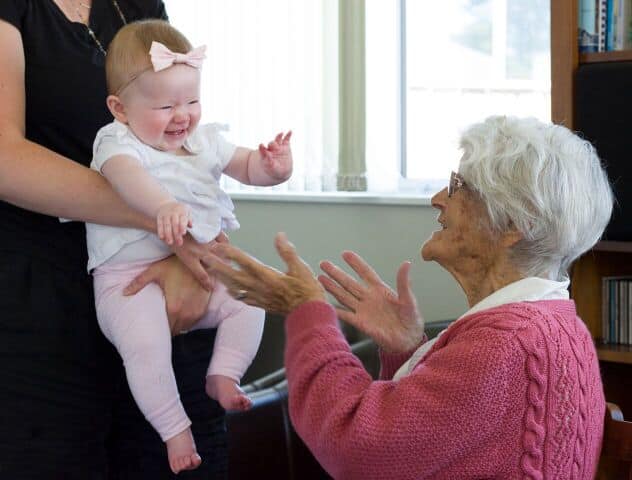
Joy for Generations’ story demonstrates the importance of building intergenerational wellbeing in place, reconnecting our young people with the learnings and love of those before them.
Building a community within a community.
Lucy Adlam is a self-starter. Working for a not-for-profit organisation that connected older people with services in their community, she was about to take maternity leave when she decided to spend two weeks in the call-centre before she left. Her experience there changed her.
“Some of the elderly people I spoke to said it was the first phone call they had received in months.”
Lucy decided that once her daughter was born, she’d start volunteering and spend time with seniors – knowing firsthand how important it is to involve everyone in community activities, to relieve isolation and improve their wellbeing.
Lucy began visiting rest homes. She remembers the memory of seeing people with no visitors, month in, month out.
“I still feel it all over my body.”
One day, Lucy noticed a woman lying still in her bed, unmoving. It wasn’t the first time she had noticed her. Not knowing what else to do, she carefully knocked and poked her head around the doorframe.
“Hello… there’s a baby here!”
The woman immediately rose up. She managed to climb out of bed, and she began to sing to make the baby laugh. It was as meaningful to Lucy as it was to her young daughter – with the older lady now dancing around the room.
This was the moment that the seed for Joy for Generations was planted.
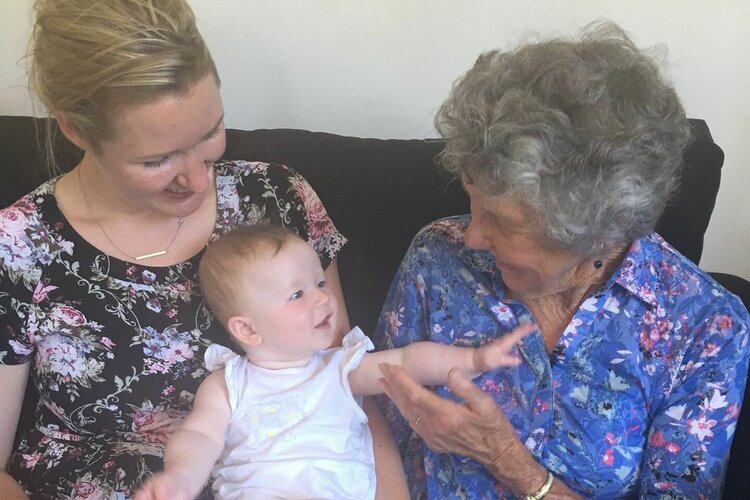
Connection is essential to wellbeing.
Weaving together the strengths and relationships in your place.
With a young family, little time, and – at this point – no funding, Lucy knew it was important to first build from her own networks, relationships and local strengths. She began to engage the other new mothers within her antenatal groups.
Lucy began bringing more new mums to visit with the rest home, and they created intergenerational playgroups.
This point on their journey was about building relational capacity, and growing the group’s momentum through a sense of fulfilment. JFG wasn’t yet official, but Lucy’s connections within the community were growing.
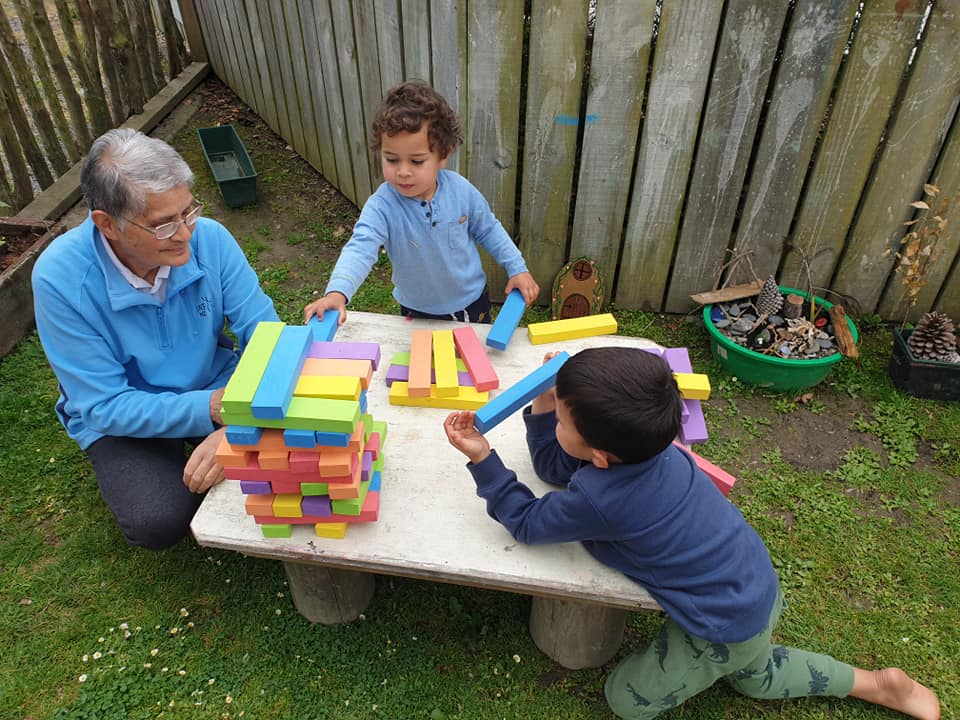
Intergenerational play brings fun and connection to all involved.
Leaning in, and learning as you go.
Joy for Generations became official when Lucy moved to the Wairarapa.
By working to identify their kaupapa and vision of intergenerational wellbeing, Lucy was always learning.
“As much as we loved to see the playgroups grow, we noticed an imbalance of attendees, with rest homes having large groups of seniors and children feeling a little intimidated. This helped us to see that a core value in our groups was equal enjoyment for all generations.“
On the back of this learning, the group learnt to adapt their vision by focusing on how to bring the different generations together in a way that benefited the joy and learning for both generations.
JFG began teaching children more about older generations to make them feel more comfortable and increase their understanding of other generations. This helped children understand the meaning behind the intergenerational activities.
One of the most important parts of mindful development is to recognise that it’s easy to get busy with the ‘doing’, and not make time to reflect on what’s working, what’s not, and how to adapt.
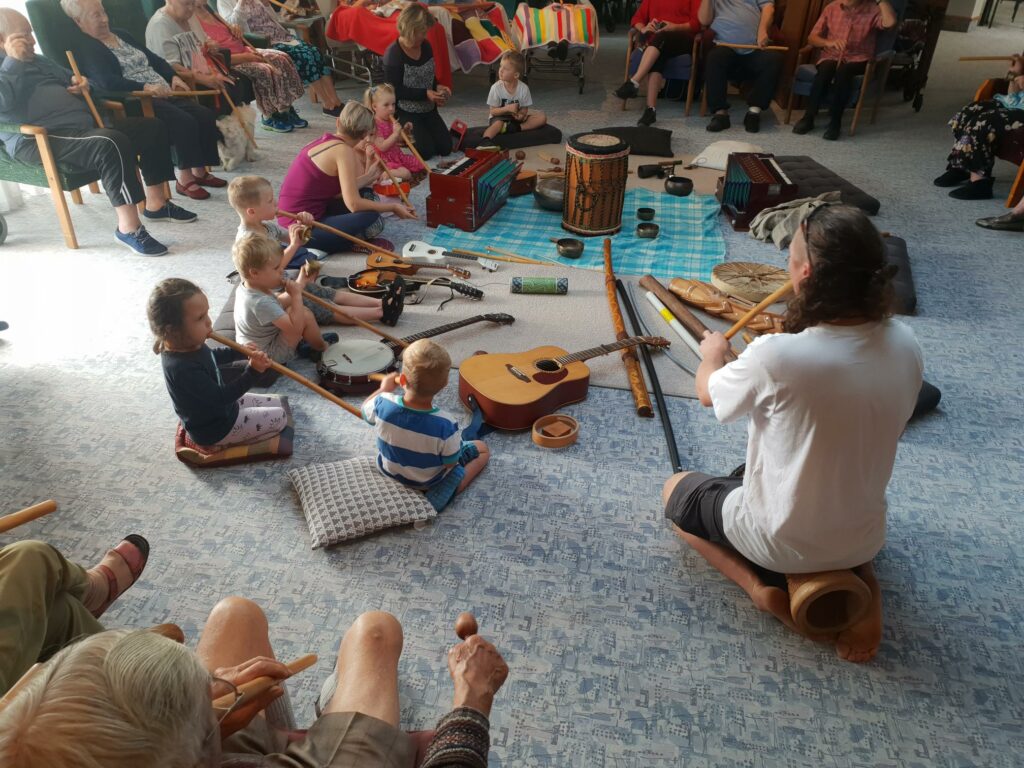
Music workshop for the young and the young at heart.
Building momentum through collaboration and experiences.
Collaborating with diverse community groups and organisations Age Concern, Ka Pai Carterton and Neighbourhood Support, and connecting with the three district Councils in the region, JFG formalised their structure and set up a Board of Trustees to provide strategic guidance.
JFG organised a community hui (Wairarapa Children’s Day) and invited local kaumatua to share stories and crafts with children. Strengthening connections and relationships with local iwi was always a priority of this kaupapa.
“Maybe because it’s a small region, there is a strong sense of place and belonging here. Everyone just got involved. We only initiated the start and it grew into this wonderful thing.”
Poi workshops were held at the local primary school, and several rest homes brought residents to the school to participate. The only challenge was getting the seniors back to their rest home.
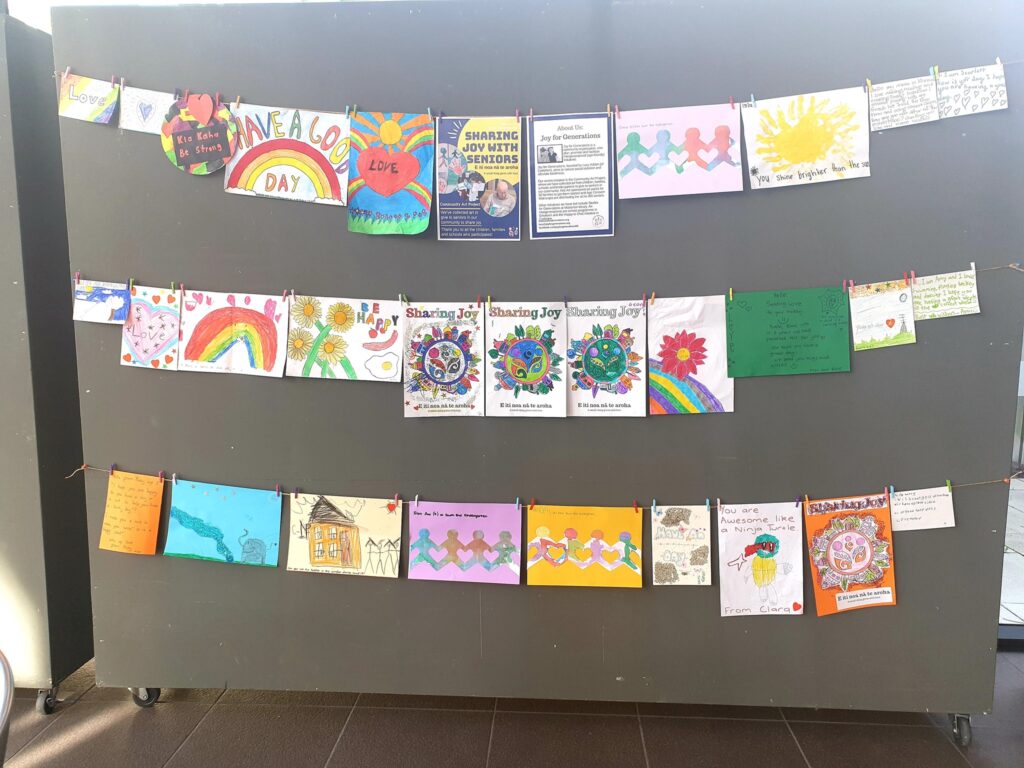
Sharing Joy” artworks created by local tamariki.
During Lockdown, JFG acquired some funding to create art packs for 50 families, sending the art out in collaboration with Age Concern.
“One older lady called me and told me just how much the artwork blew her away. She didn’t have any family or grandchildren around her. The young boy who created the artwork now calls that lovely lady his ‘NZ Grandmother’ – and they exchange art work and cards regularly. I mean, that is just one of those wonderful moments.”
A rally cry for more diverse funding models.
As JFG grew, so did its financial needs. In what is a familiar story for many grassroots community-led initiatives, their sustainability and impact rely on volunteers, on funding and in some cases, self-funding. More and more rest homes wanted to set up intergenerational playgroups, but this began taking more resources than JFG had to give.
Building relational capital, nurturing local relationships and developing adequate funding proposals all takes resource, capability and capacity that some locally-led initiatives don’t have to spare.
“As community-led initiatives continue to learn and develop as they go, it calls for funding models and procurement systems to do the same. One system does not fit all.”
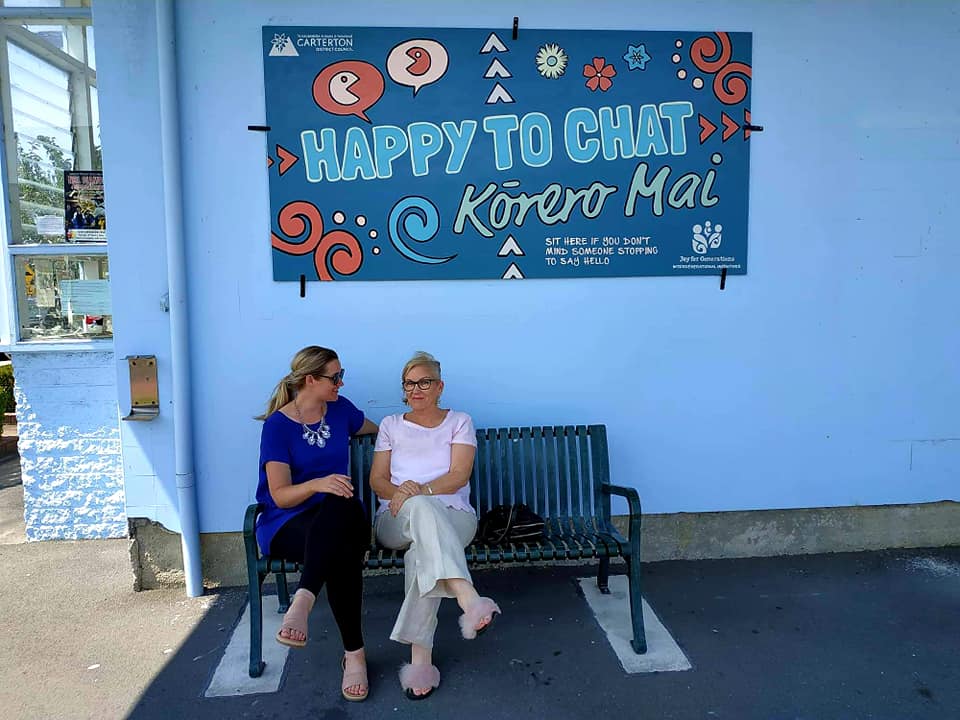
Another JfG initiative, the Happy to Chat bench, invites people to connect and share a yarn.
Funds might run out, but the community never goes away.
Intergenerational practices provide a setting that can help to relieve isolation and involve people in activities that contribute to – and improve – the general health and wellbeing of our societies and of our families.
The relationships built, the learnings gathered, and the people who have now been connected and inspired by JFG continue to exist in the Wairarapa.
“There are a couple of other playgroups at rest homes around New Zealand, but no other organisation is focusing on intergenerational initiatives and connections. We’ve really tried to develop the intergenerational space here in New Zealand, and have been found online by groups in America and Asia who have contacted us for support. Some things work out, and others don’t. It’s all learning. People who want to better our communities, our tamariki, our elderly, will never go away.”
Lucy is pragmatic. She sees JFG as a pilot, and hopes that it will be an initiative that sprouts again inside and outside of the Wairarapa region, fostering age-inclusive communities all across Aotearoa.
If you’re keep to tap into Lucy’s experience and ideas on building intergenerational connections, you can contact her at lucy@joyforgenerations.org or through the website www.joyforgenerations.org.
